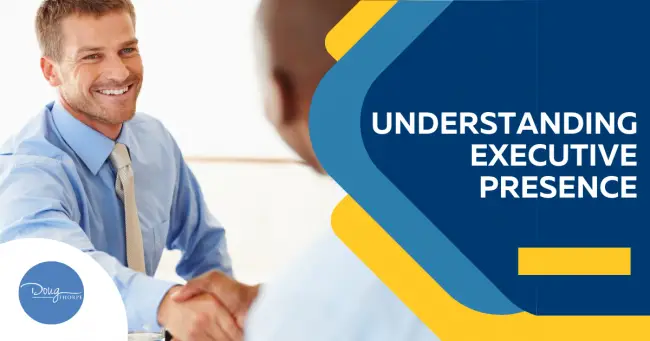
Presence is letting the most powerful version of yourself shine through. I like to cite the renowned leadership expert Sylvia Ann Hewlett, who defines “presence” as a combination of gravitas, communication, and appearance. Together, these elements form an impression of trustworthiness, competence, and authenticity.
Gravitas is signaling that you have the confidence and credibility to get your point across and create buy-in. In a study of almost 300 senior executives, Hewlett found that 67 percent believe that gravitas is what matters most in leadership. Communication is closely connected to gravitas.
Your bearing and speaking skills are what establish your confidence and credibility and thus communicate gravitas. As much as we may not want to admit it, appearance is the third piece of this puzzle. This is not as much about how we look as it is about how we present ourselves.
Because humans are biologically wired to scan the environment for threats, we form impressions based on very little information. According to social psychologist and bestselling author Amy Cuddy, people quickly answer two questions when they meet you: Can I trust this person? Can I respect this person? To influence others, you need them to trust you and see you as competent.
Cultivate confidence: Part of developing presence is conveying confidence. What if you don’t feel confident? I’m a big believer in Cuddy’s work on “power posing.” Her central idea is simple: By assuming a posture associated with power, you can “fake it until you become it,” and make yourself feel more powerful. Though Cuddy’s work has been somewhat controversial, people around the world swear by power posing before a big meeting or interview.
Up your game: To communicate effectively, it’s important to regulate your reactions, recognize emotions in others, and manage your responses. Let other people speak first. Ask questions and make them feel understood. Remember to smile, make eye contact, and lean forward. By staying in the moment and maintaining focus on the conversation, you can ask the right questions and lay the foundation for trust and openness to your influence. Also, to convey confidence, use what a 2014 Harvard Business Review article calls “muscular” language. Instead of saying “I just think,” try “I strongly suggest”; instead of “Maybe that’s possible,” say “Here’s my plan.”
Dressing—and feeling—the part: There should be a strong connection between who you are, who you want to be, and how you look. If you want to be successful in the financial sector, for instance, you need to look like someone who understands and can be trusted with Money. Identify the people who are successful where you work, and study how they put themselves together. Focusing on your appearance can also go a long way toward boosting your internal confidence.
Research by Adam Galinsky, the Vikram S. Pandit Professor of Business and chair of the Management Division, finds that the physical experience of putting on clothes that you associate with power can put you in a different state of mind — what he calls enclothed cognition — allowing you to feel more confident, which in turn will, hopefully, improve your performance. The interior life of a person and their external presence are deeply connected. When people pay more conscious attention to this connection and embody presence, they can expose their unique talent to the world in ways that will enhance their happiness and success.
Contributed by Karen Gray, an ICF-certified executive coach and leadership consultant. Using her experience as a coach and senior executive, she helps clients develop their leadership effectiveness and find more fulfilling career paths. Her passion is supporting the Growth of individuals, leaders, and teams. She partners with clients to increase their emotional intelligence, navigate organizational and career transitions, and develop new leadership strategies.
The post What Is Professional Presence and How Can I Achieve It? appeared first on Business Advisor and Executive Coach | Doug Thorpe.
Notifications
 How Do I Develop Presence?
How Do I Develop Presence?